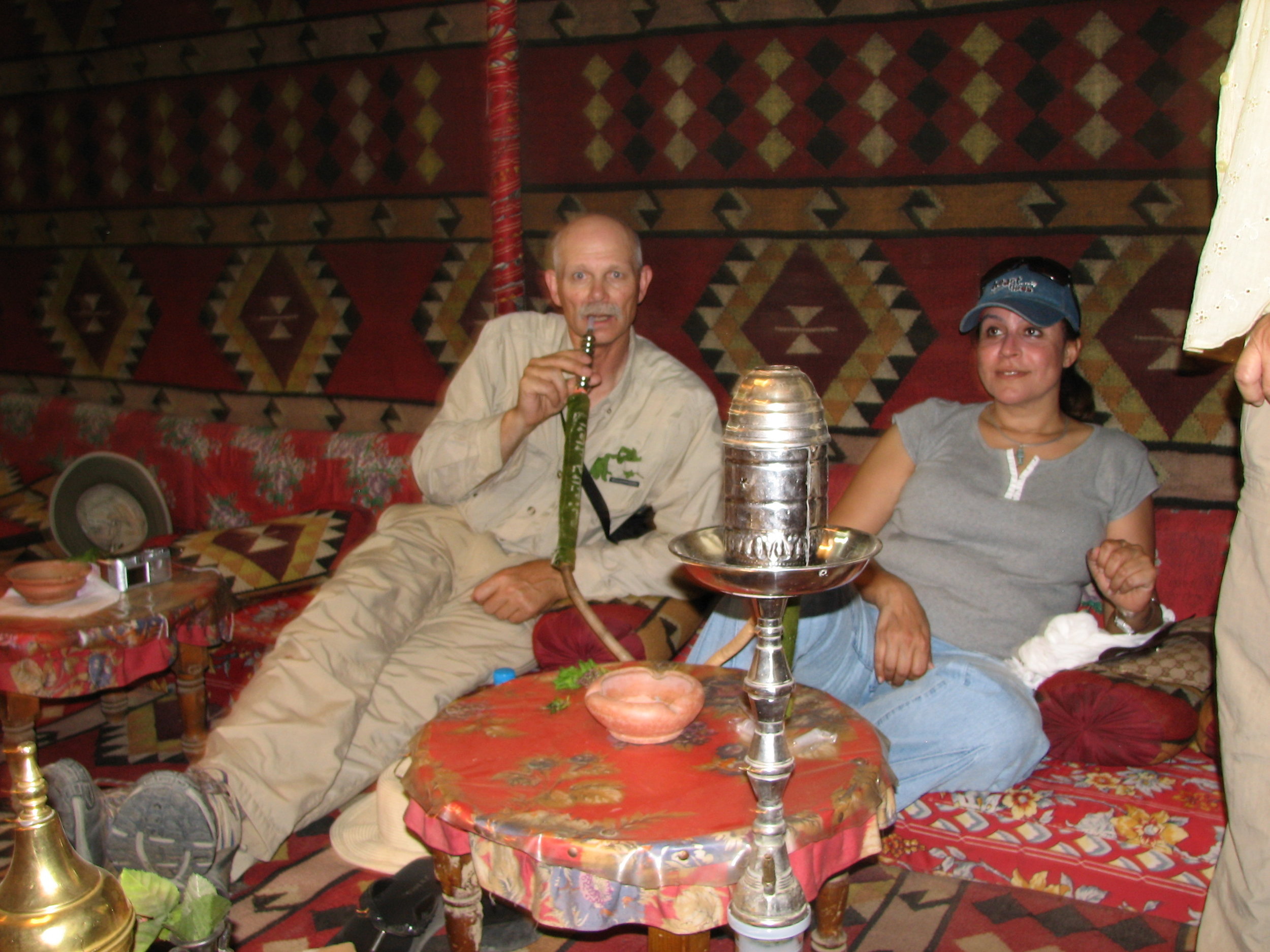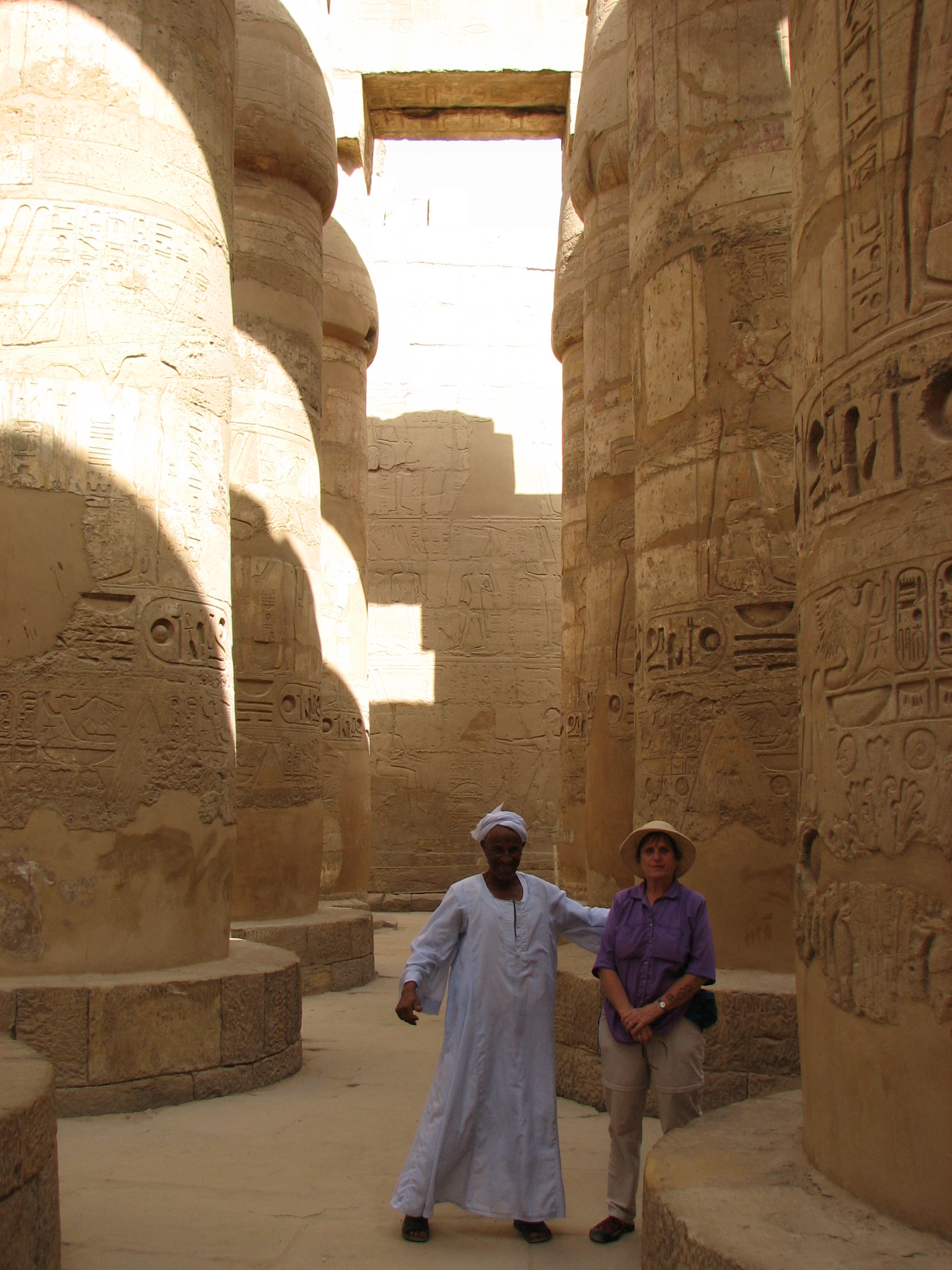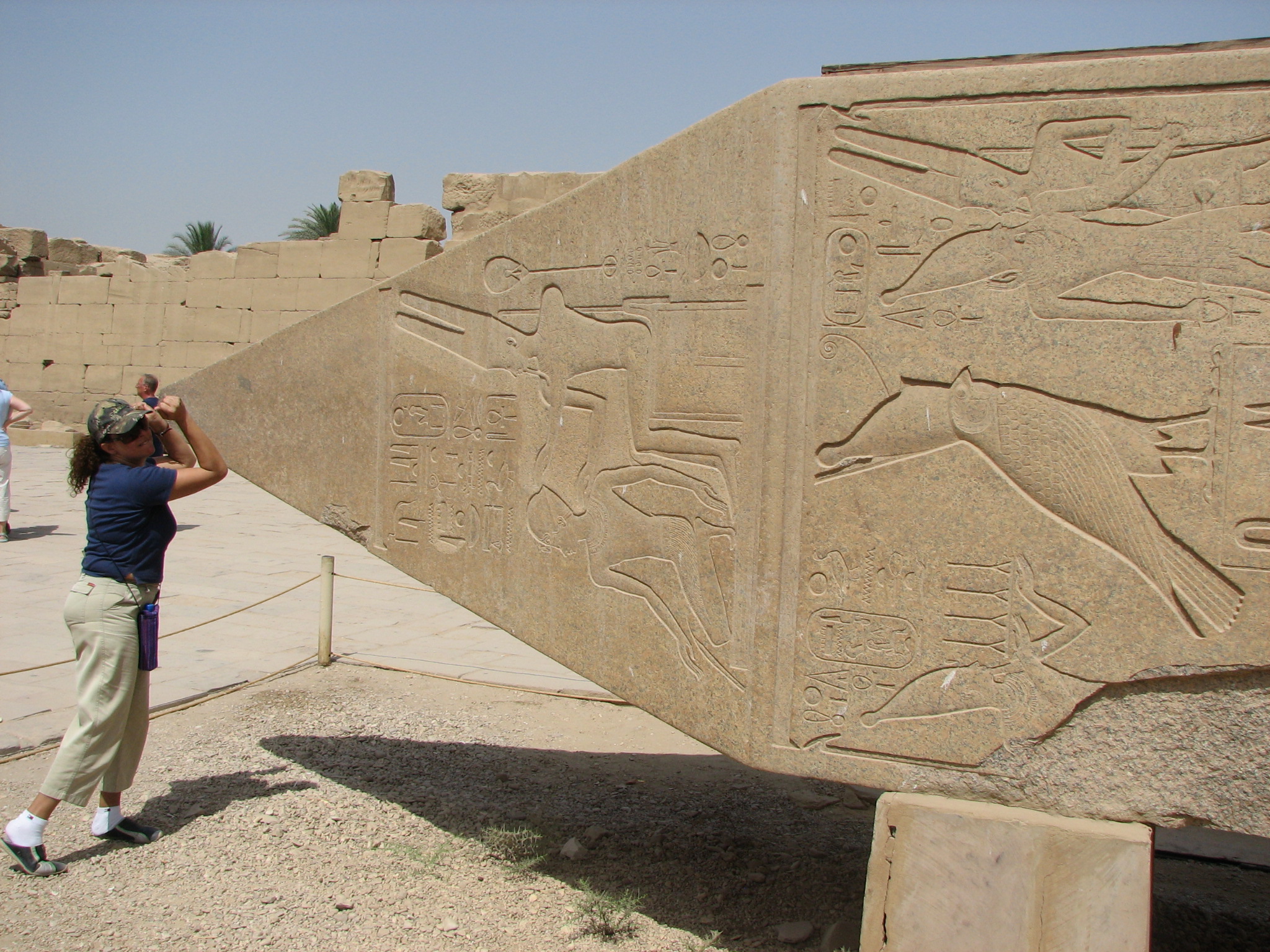Kom Ombo bas reliefs
We are still at the Temple of Kom Ombo. We saw bas relief carvings and hieroglyphics in all the temples, tombs, and other ancient buildings. I have not shown you very many, but I will show some here. I think the bas reliefs and hieroglyphics at this temple were probably the best that we saw, both in terms of quality and my interest level. The reliefs tell stories about the gods and pharaohs, show some of daily life and special events, show battles and other major events.
The first photo is a large pillar outside the entrance to the temple. I included it because it was well preserved, both in terms of the carving and the color. Remember, all of the carvings were also painted or somehow colored originally. But after years of being covered with sand, flooded, and pillaged, most don’t look this good.
The second relief was quite typical. In the second picture, Sobek is the character that is second from the left. On the right side, a pharaoh is being crowned – with a little help from his friends. The ancient Egyptians always thought people, gods, and pharaohs looked their best with their heads in profile.
I found the third photo very interesting – and perhaps a bit X-rated. If you look at the bottom and center of the photo, you can clearly see a pair of penises, one on top of the other one. If you look closely, you can see that the top penis has sent out 7 drops of liquid. If you look closely at the bottom penis, it has only sent out 5 drops of liquid. So, according to our guide, the pharaoh was probably becoming impotent. What I can’t figure out is this: why did this get carved into the wall in this important temple? I mean, if I’m the pharaoh, do I want that carved into the temple wall? I don’t think so. I suspect that the pharaoh really upset some poor lowly relief carver. So when the pharaoh was off sailing on the River Nile, I figure that the really upset relief carver went ahead and carved his two cents worth into the wall. It was probably his last two cents worth.
The next photo is a zoomed in shot of a calendar. The whole year was there carved into the wall. The center symbols meant something but I can’t remember what. Then there was each day as well. If you look at the bottom right side, you can see that the bottom five are a new (round figure) month and you can count down the days : 2,3,4,5 by the number of little square relief pegs. Our guide explained it all, but it was information overload. Take my word for it, they had the whole yearly calendar carved in there.
In the center of the next photo, from the bottom, you can see a table. On top of the table, you can see what is supposed to be the horizontal portion of the table – only it is carved in vertically so that you can see it. It is a doctor’s operating table covered with all the operating instruments. It has scalpels, a saw, and all sorts of other instruments, but you must look very closely. Just to the left of the table is a woman (actually two women) who are getting ready to have a baby and are, I suppose, in need of the doctor’s help. On the right of the table, you can see a bowl on a stand that might be for water or might be for mixing drugs. The ancient Egyptians seemed to have been very advanced.
The last photo was just to the left of the previous photo on the back wall of the temple. It is the eye of Horus. Our guide insisted that this symbol went on to become the “Rx” that is today so common on drugs from our drug stores. She explained it all, but again, for me, it was information overload.









































































